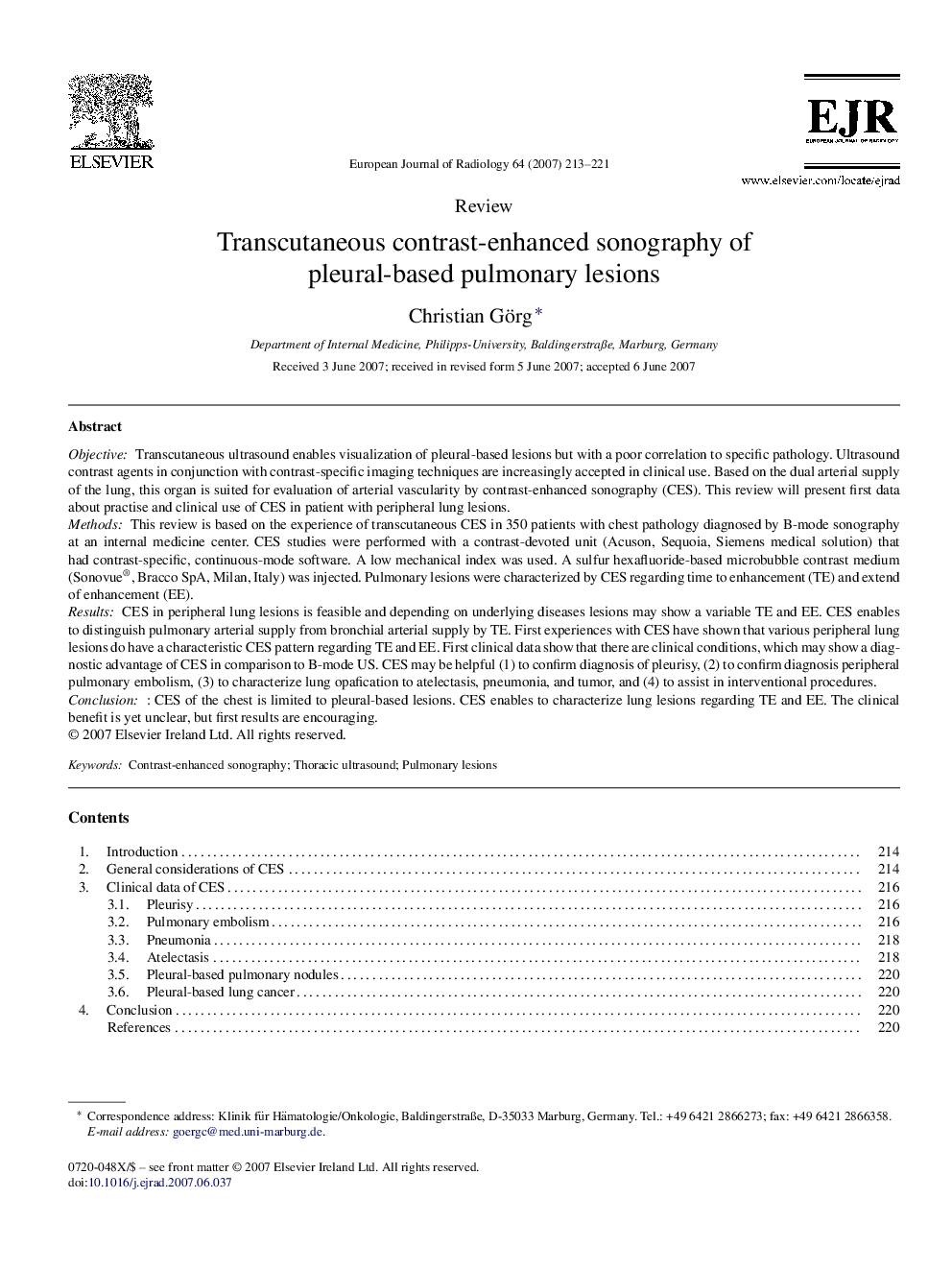| Article ID | Journal | Published Year | Pages | File Type |
|---|---|---|---|---|
| 4227960 | European Journal of Radiology | 2007 | 9 Pages |
ObjectiveTranscutaneous ultrasound enables visualization of pleural-based lesions but with a poor correlation to specific pathology. Ultrasound contrast agents in conjunction with contrast-specific imaging techniques are increasingly accepted in clinical use. Based on the dual arterial supply of the lung, this organ is suited for evaluation of arterial vascularity by contrast-enhanced sonography (CES). This review will present first data about practise and clinical use of CES in patient with peripheral lung lesions.MethodsThis review is based on the experience of transcutaneous CES in 350 patients with chest pathology diagnosed by B-mode sonography at an internal medicine center. CES studies were performed with a contrast-devoted unit (Acuson, Sequoia, Siemens medical solution) that had contrast-specific, continuous-mode software. A low mechanical index was used. A sulfur hexafluoride-based microbubble contrast medium (Sonovue®, Bracco SpA, Milan, Italy) was injected. Pulmonary lesions were characterized by CES regarding time to enhancement (TE) and extend of enhancement (EE).ResultsCES in peripheral lung lesions is feasible and depending on underlying diseases lesions may show a variable TE and EE. CES enables to distinguish pulmonary arterial supply from bronchial arterial supply by TE. First experiences with CES have shown that various peripheral lung lesions do have a characteristic CES pattern regarding TE and EE. First clinical data show that there are clinical conditions, which may show a diagnostic advantage of CES in comparison to B-mode US. CES may be helpful (1) to confirm diagnosis of pleurisy, (2) to confirm diagnosis peripheral pulmonary embolism, (3) to characterize lung opafication to atelectasis, pneumonia, and tumor, and (4) to assist in interventional procedures.Conclusion: CES of the chest is limited to pleural-based lesions. CES enables to characterize lung lesions regarding TE and EE. The clinical benefit is yet unclear, but first results are encouraging.
